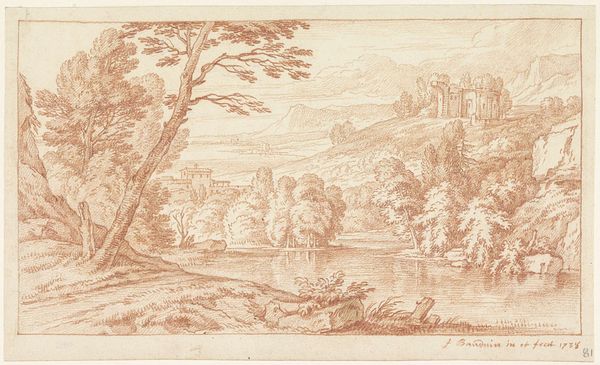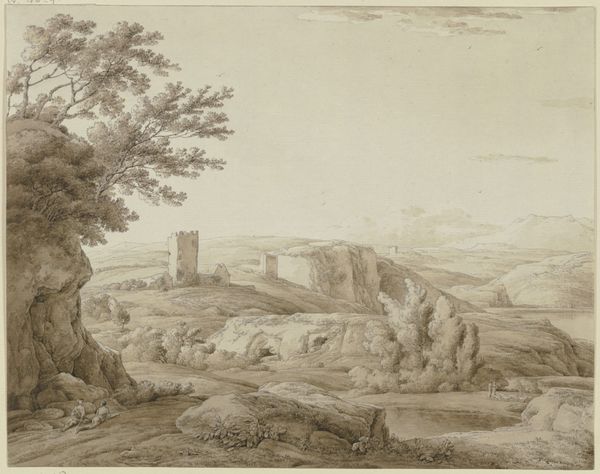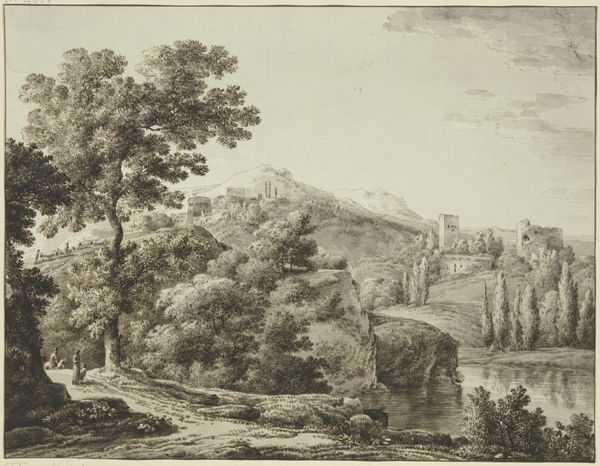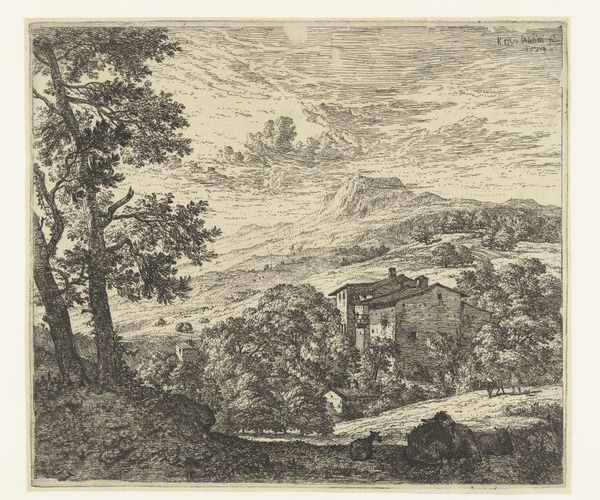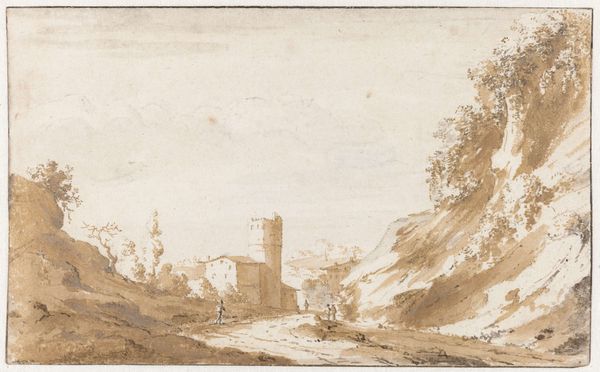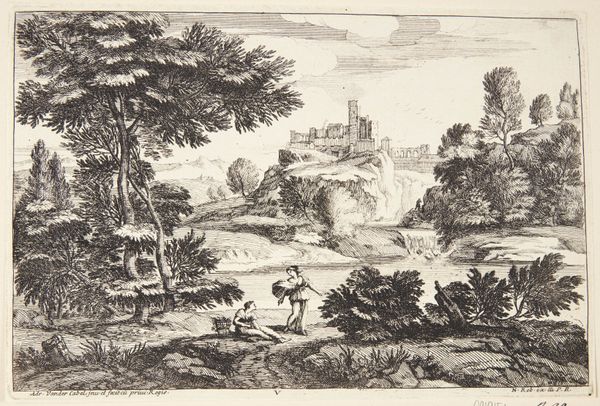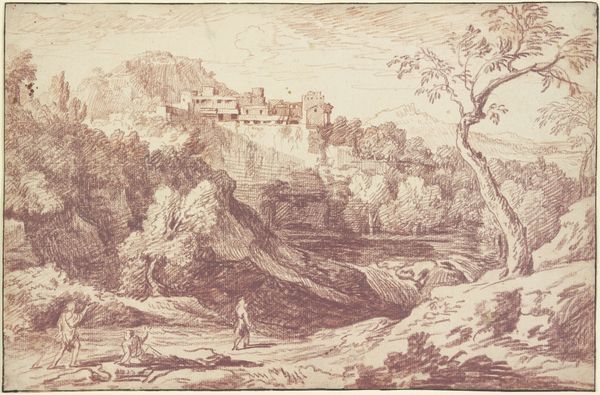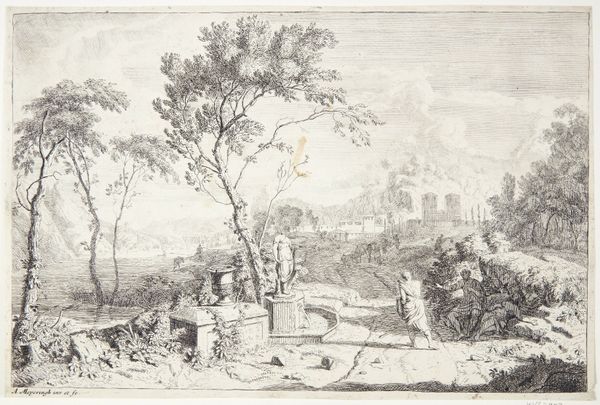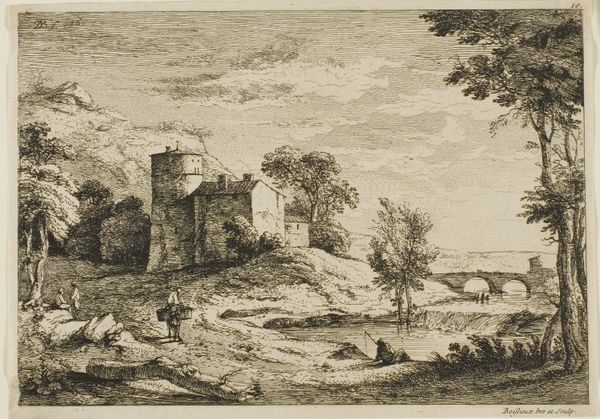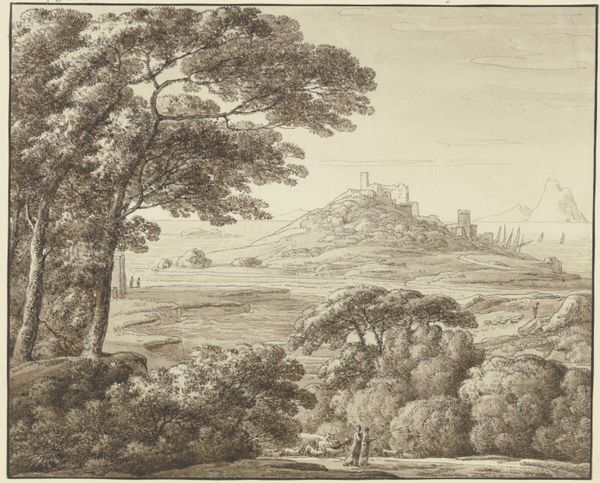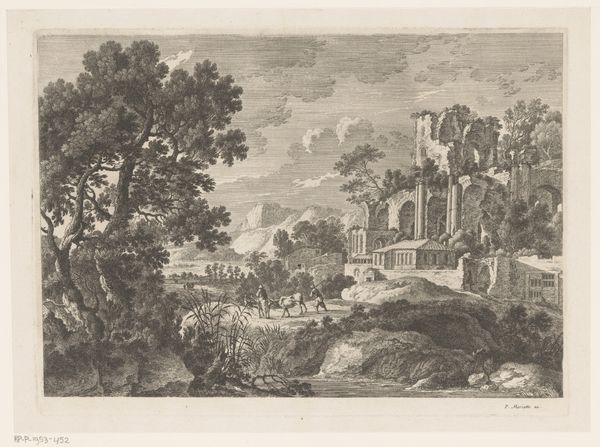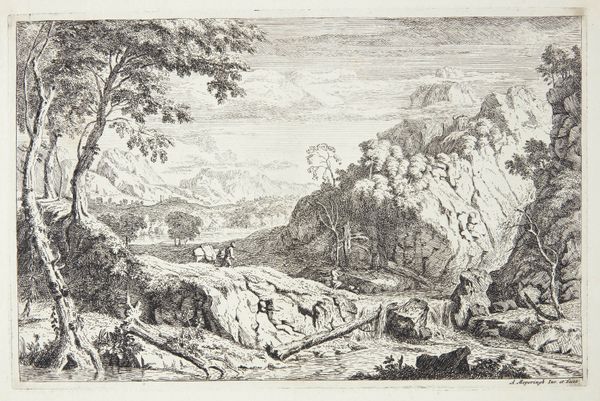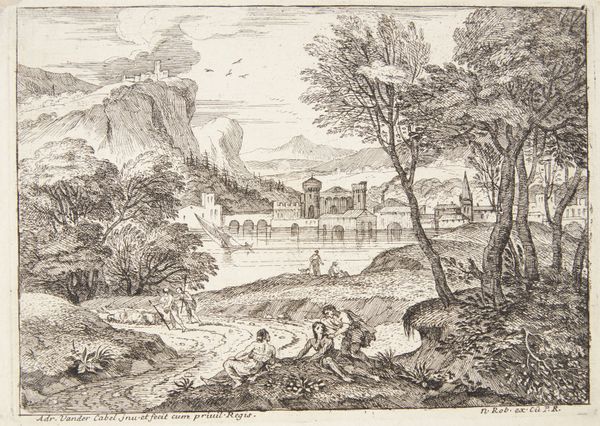
print, etching
#
baroque
# print
#
etching
#
landscape
#
etching
#
line
Dimensions: 265 mm (height) x 180 mm (width) (bladmaal)
Curator: This etching by Abraham Genoels, created in 1676, is titled "Gravmæle i en dam," which translates to "Tomb in a Pond." It’s a piece currently residing in the collection of the SMK, the National Gallery of Denmark. Editor: It evokes a sense of melancholic tranquility. The stark contrast in the etching technique highlights the delicate reflections in the water against the crumbling monument. I am intrigued by its scale. Curator: It's part of a broader artistic movement during the Baroque period where landscape and ruin imagery were used to comment on power, time, and memory, the decline of empires perhaps. The choice of a print as a medium democratized such messages too, broadening the audience that would be able to reflect on its subject. Editor: Visually, it’s the contrast between the ethereal line work depicting the water and the more grounded, almost brutal quality in the etching of the foliage, that draws the eye. How the play of light articulates this landscape’s somber, almost gothic sensibility. The way it fades into the distance adds a touch of mystery as well. Curator: That crumbling tomb set against the pond in the landscape suggests a commentary on fleeting fame and forgotten grandeur. Consider also the historical context of Denmark during that time – the etch could be viewed as part of a cultural reckoning of territory or the nation-state itself. Etchings like these were also reproduced for personal collections within wealthy estates to signal refined and intellectual tastes, especially for an artwork laden with cultural significance and social implications. Editor: I concur, yet I'd suggest that the overall composition invites introspection and contemplation irrespective of the prevailing socio-political context of its time. Looking closer at it, one gets the sense that the architecture on the hill seems to gaze towards the main subjects adding the dimension of judgment onto it. Curator: Interesting to ponder these reflections, isn't it? The political underpinnings as they intertwine with our interpretations. Editor: It's precisely through that interpretive interplay that the essence of art continues to breathe, wouldn't you agree?
Comments
No comments
Be the first to comment and join the conversation on the ultimate creative platform.

